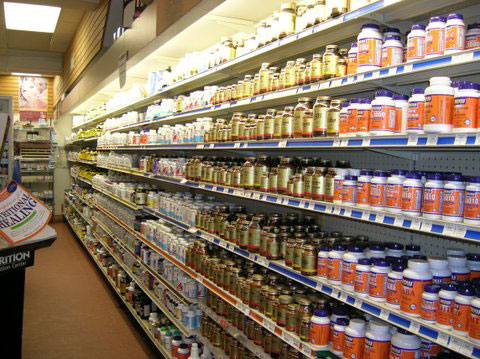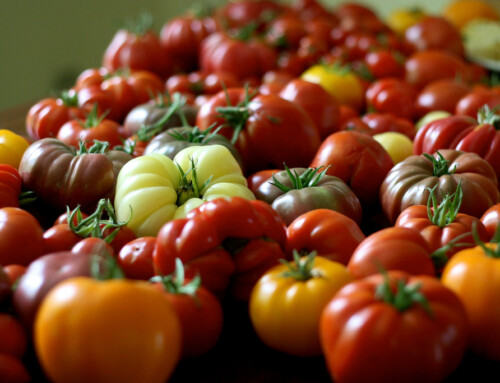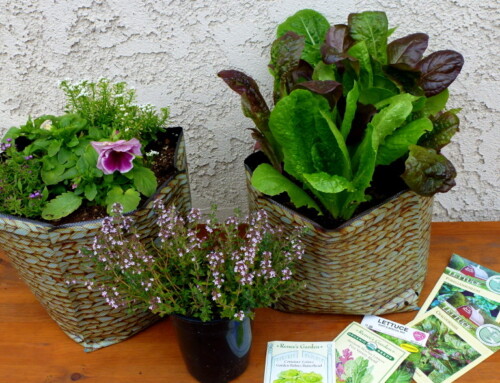
Here’s another unconventional article on nutritional health by Gary Kline that will cause you to rethink what you’ve always been told about supplements.
Supplements, The Wrong Road?
by Gary Kline
Don’t take vitamins! That’s the advice of Certified Clinical Nutritionist, Judith De Cava. What De Cava is referring to is synthetic vitamins, the kind that come out of bottles, generally as pills, and fall under the classification of supplements, but which are legally (and actually) drugs.
Besides being expensive, synthetic vitamins aren’t really vitamins; they are not only virtually ineffective, but worthless. Indeed, they are generally harmful and work opposite to the way they are claimed and supposed to work. This is because they are “fractionated”; i.e., isolated sub-parts of the real, complex thing that occurs in nature and in wholesome foods. They are the product of vain attempts to identify, isolate and chemically reproduce the presumed “active component” within a real vitamin. Wrong road!
Both the public and the creators of these simplified knock-off imitations of nature’s intricate biochemistry are duped. It’s simply not possible to duplicate the galaxy of enzymes, co-enzymes, proteins, trace minerals, anti-oxidants, amino acids and yet-to-be-identified molecules that make up true, functional vitamins. It is arrogance that thinks otherwise.
This is the compellingly made argument in De Cava’s 2001 book, The Real Truth About Vitamins and Anti-Oxidants. Again, with regard to antioxidants, she is mainly referring to synthetic fragments of the real thing; namely, certain presumed “vitamins” (C and E) and crude mineral supplements (such as selenium) heralded as protectors and saviors of health in our modern, polluted world and from over-processed foods derived generally from nutrient-depleted soils. But actually, De Cava doesn’t think much of the whole theory of protective antioxidants. And, frankly, it never made much sense to me, either. Here’s a paragraph by De Cava (p. 67): “Antioxidants, in theory, ‘choke off the supply of oxygen’ to the free radicals by giving up their own electrons and ‘heading off’ the supposed dangerous chain reactions. If the body naturally produces free radicals would it be logical that the body would attack itself and require substances to ‘choke off’ needed oxygen?” Ponder that.
I previously wrote a little article about the prominence of oxygen in and on our planet and its uppermost essentiality for life. Our atmosphere is 20 percent oxygen and kept that way by the Gaian dynamic between plants and animals and naturally interacting processes of earth, air and water. If the oxygen level were to go down to 15 percent, we would all suffocate. If it went up to 25 percent, we (and all organisms) would burn up in spontaneous combustion. So, it’s a delicate plus or minus 5 percent thing.
If oxygen is so vital to our existence, and for our every cell and every breath, why would our bodies need something that is anti-oxygen? Do antioxidants really work in the way medical orthodoxy now insists? Free radicals are not unnatural, nor are oxidation processes in the environment and in our bodies. Indeed, if we didn’t breathe in oxygen to slow burn our food for energy and to release its building blocks, we’d be nowhere.
But how can it be that we can have runaway atomic/ionic/molecular collisions that call for taking antioxidants to quell them? I’ll confess to simple ignorance on this, but there may be more than audacity and heresy to De Cava’s contention that antioxidants (natural or not) aren’t what they are cracked-up to be. Maybe they are just part of the team of everyday balanced metabolism.
What De Cava is saying is that we have to derive our vitamins and our health from whole foods and not count on simple, crystallized, synthetic pretenders to make up for our nutritional deficiencies; logical as that may seem on the surface. The same would go for mineral supplements; we need to get them in “organic” form from nutrient-dense foods grown on mineral-rich soils. However, I staunchly maintain there are a few demonstrable exceptions to that rule. Ocean mineral supplement extract from seawater is foremost in that regard. It is true insurance against mineral shortfall from food. Yes, you ingest it – – – regularly.
Back to the natural-versus-man-made vitamins issue. Over and over, De Cava states, and supplies the clinical findings to back her up, that we have to get our vitamins – – – which are crucial to health – – – from whole foods; and she repeats a mantra of fruits and vegetables. There’s certainly a lot to that. However, I will point out that she cites animal-source foods, including butter, cheese, organ meats, fish oils and eggs, as chief sources of some of the real, natural vitamins. De Cava argues that we are better off not taking any vitamins if they are synthetic or trying to make up for some suspected singular vitamin deficiency, which invariably will produce imbalance. Imbalance leads to sickness and infirmity.
Lately, I’ve come up with my own theory of health derived from certain foods in an attempt to put all this together. Why, for instance, does juicing with raw fruits and green vegetables in particular, have such a profound effect, at least initially, in restoring people’s health and sense of well being? But don’t overlook the fact that raw liver juice can do as much or more. The value of raw milk, cream and butter (and throw in a raw egg now and then) in reversing certain diseases, preventing tooth decay, etc. is certainly well-documented. And what about sushi (raw fish and shellfish)? But is it only raw foods that are healthful? Was cooking and fire a big mistake early on?
Allow me to ruminate and speculate in trying to put all this together. Let’s think of it as a jigsaw puzzle and trying to fit all the pieces into their right place. But let’s recognize there is an extra challenge in that there are a lot of pieces in the box that aren’t supposed to be there, and we have to weed them out in the process of putting together that completed picture on the lid or in our minds.
The place to begin, I think, is with food enzymes. If my thinking is not too fractionated, I’d say enzymes are the key pieces. They are simply incredible. For one thing, enzymes can speed-up ordinary chemical reactions by a million times! They can operate at a speed we can’t comprehend, let alone observe. Enzymes are special proteins, and I like to point out that what makes them go, or energizes them, is, in most cases, a single atom of a mineral; be it copper, zinc, iron, magnesium or who-knows-what-all.
But enzymes are also delicate and easily destroyed by temperatures as low as 118 degrees F. Some might survive to 150 degrees F in heated liquids, but not much more. This kind of rules out cooked foods as a source of indispensable enzymes. Take note that every single process in our bodies (billions going on every minute) is mediated by enzymes. They control everything, and most (if not all) are energized in some magical and incomprehensible way by that single mineral atom “spark plug”. Tell me minerals in our food and in our soils are not important. They are at the core of the core of our entire metabolic machinery. Get yours today!
Now then, much of the same thing can be said about vitamins. True vitamins from real food, properly grown, have incredible metabolic impact in extremely tiny amounts, but not if they aren’t present or have been destroyed. The word “vitamin” originates from “vital aminos”, which turned out to be an error. But vitamins too, are proteins, and proteins are life; that is, there is no life where there are no proteins. Most vitamins are easily destroyed in cooking. Remember, vitamins are complex. They have inseparable partners, including enzymes, minerals and amino acids. Separated from their partners, they don’t work well, and what work they do is likely to be rogue, imbalanced, and destructive, if present in high and sustained amounts. It’s aberrations that do this; not nature by design. We can’t top what nature worked out in millions of years of selection and evolution. Perhaps the supplement most needed by humans is humility. After all, the word human comes from a Latin word meaning soil; and the word humility from the Latin word meaning lowly.
So, I’ve suggested that enzymes and vitamins, as well as minerals, must lie at the foundation of nutritional health. In other words, we’re talking about good diet. The problem is that meddling humans have made it almost impossible to get on a natural, wholesome diet, or even know what one looks like. We’ve got to identify those mischievous pieces that aren’t part of the picture puzzle and that we need to assemble to get back to real health. Formerly, it was fairly easy and instinctive, but not in today’s world, so adulterated in the pursuit of convenience and shortcuts. What has it really gotten us? More problems than we can shake a fist at, or both fists.
Next question: What else is there in our box of required pieces to be fitted in? Lots. But, we’ve come a long way and the picture of health is coming together. Here are most of the other needed pieces: carbohydrates, fats, proteins, amino acids, flavonoids, hormones, and carotenoids. We know, or think we know, about the good and bad forms (and deforms) of carbohydrates, fats and proteins. There are the simple versus the complex carbs, the natural and the refined. There are the vegetable oils or fats and the animal fats, and the saturated and unsaturated, plus the more and less healthy essential fatty acid ratios. There are the plant and the animal proteins, complete and incomplete, along with their numerous essential and non-essential amino acid building blocks.
But there is a lot of misinformation and confusion concerning these nutrient metabolites. And, if you want to get straightened out on it all (as well as on the merits of a vegetarian versus omnivorian diet), you can’t do better than to consult Nourishing Traditions by Fallon and Enig (2001).
Suffice it to say, in my view, assuming livestock and fish are raised in clean, healthy environments and fed properly, animal-source fats and proteins are the more complete and human nourishing forms when eaten raw or not over-cooked. At the same time, it must be acknowledged that plants furnish flavonoids that have unique nutritional roles and that are not available from animal-source foods.
Raw isn’t all good, and cooked isn’t all bad. Some foods are better for you when cooked. But our bodies have a requirement for at least some raw foods, if only because cooking destroys food enzymes and most vitamins, and we have to have those to some minimal extent in order to sustain nutritional health.
Coming back to the observation that juicing, particularly of green vegetables, can have profound impacts on health restoration and weight loss for those whose errant diets have caused them to be overweight or obese, and possibly to suffer any number of metabolic, degenerative disease conditions, what’s the explanation?
Is vegetable juicing or vegetarianism the whole answer to optimal health over the long haul? I don’t think so, but how can we account for the profound impacts juicing, as well as eating plenty of fruits and vegetables, can and does have on achieving a normal, healthful body conformation and a sense of well-being? Shouldn’t these be at least part of a lifetime dietary regimen?
Again, let’s not forget that raw, whole (and pure) animal-source foods also have profound effects on achieving and maintaining excellent health. One obvious boon to drinking vegetable juice extracts is that it saves you having to eat a mountain of produce. Fiber factor aside for now, what this does is it quickly puts highly assimilable nutrients more directly into the bloodstream, bypassing energy-draining digestive operations and on into the body’s cells in concentrated doses. You get the maximum nourishment by the most direct route.
Herein probably lies the key to why juicing works and works wonders. This also holds true, I submit, to taking ocean mineral extracts because the minerals are entering the bloodstream and the cells at the atom-size level and they do not first have to be broken free from some food compound or some nearly-insoluble form. So it isn’t a matter of vegetable or animal or mineral, but all three in combined and correct forms.
Even so, I recommend having a vegetable salad as part of one or more meals daily. However, why not throw in some cheese, boiled egg and bits of shrimp (yeah, even good bacon)? Virgin olive oil fits in nicely here for a dressing, and sprinkle on some sea salt and ground pepper or cayenne powder. It is a fact that a small amount of animal protein and fats added to a meal of rice or grains or vegetables greatly increases their nutritional efficiency. This is the SOBAMM principle (Some Of Both And Maybe More) in action. It’s synergy made manifest.
My theory is that what is unique about raw, whole juice extracts is that they put a concentrated charge of enzymes, vitamins, hormones, minerals and other nutrients almost directly into the cells where the demand and action is. This doesn’t happen nearly as effectively in any other way or with processed and cooked foods, even if they started out nutrient and mineral-rich. The average American diet currently is 85 percent processed foods. All of the above obviously implies that you grow (or otherwise obtain) foods from mineral-augmented soils using organic methods.
By juicing you are giving the cells exactly what they need and at the levels they require to operate at full efficiency. The result is maximal operation and body support, along with heightened immune system function and disease resistance. The body is then operating on all cylinders. And, of course, I’m not suggesting that other foods and components of a balanced diet aren’t needed or shouldn’t come along in a lifetime dietary routine. If we get all the other parts right, the body shouldn’t get out of sorts and thus require going on fasts, juicing diets, etc. to get back on track.
What is it about green vegetable juices that is so miraculous and apparently highly effective in treating or halting cancer, as in the renowned Gerson diet? How about what makes them (vegetables) green – – – chlorophyll? Chlorophyll is the ground floor, natural, chemical-miracle that gets all of nature going via photosynthesis. Deceivingly, photosynthesis is itself an exceedingly complex process (involving numerous mineral elements at various steps). It has yet to be duplicated by man, and likely never will be. This is the real holy grail of life. Patent pending?
I think it is chlorophyll that is a major part of the explanation for why raw vegetable juices are such nutritional dynamite. I’m only guessing, but I suspect it is largely chlorophyll that gives a rush upon taking a swig of wheat grass juice. Clearly it is the deodorizing ingredient in Chlorettes, and likely in “breath mints” as well. Also, chlorophyll has cousins in the form of bioflavonoids found in non-green, but intensely-colored, vegetables and fruits.
Chlorophyll is itself a phytonutrient or bioflavonoid, an enzyme, a protein and perhaps a vitamin complex compound that is energized by a single atom of magnesium. The nearly mirror-image in higher animals (and humans) is the oxygen-carrying blood molecule, hemoglobin; except that it has an atom of iron as its spark plug.
Nevertheless, for full nutritional health, I believe you also need to supply quality animal fats and proteins, as well as complex carbohydrates in optimal ratios for superior, sustained health. They are all here for a reason. Faced with this multiple choice, you should answer “all of the above”, but make it natural, whole and real. GK
Black Lake Organic
4711 Black Lake Blvd. S.W.
Olympia, WA 98512
(360)786-0537
info@blacklakeorganic.net
www.blacklakeorganic.com






